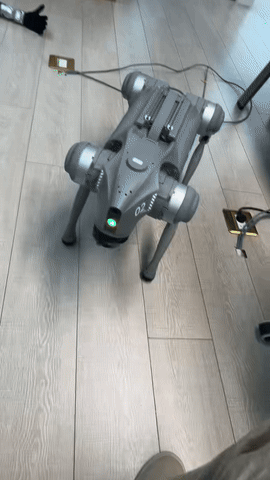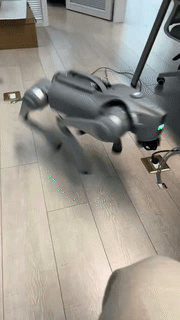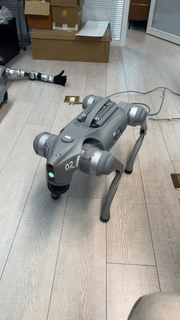Quadruped Robot
Embodied Artificial Intelligence
|  |
|  |
|  |
|
 |
|  |
|  |
| State-of-the-art
- Mature Dynamic Locomotion: Quadruped platforms have achieved highly robust and dynamic mobility. They can reliably traverse complex terrains like rubble, stairs, forests, and ice using advanced control algorithms, primarily Model Predictive Control (MPC) and Reinforcement Learning (RL).
- Commercialization and Deployment: Several platforms (e.g., Boston Dynamics’ Spot, ANYbotics’ ANYmal, Unitree’s robots) are commercially available and being deployed for industrial inspection, public safety, and research applications.
- Integrated Perception-Action Pipelines: State-of-the-art systems use onboard vision (cameras, LiDAR) to create real-time terrain maps, allowing for reactive gait adaptation and foothold planning in unstructured environments (e.g., walking over a pile of rubble).
- High-Payload Manipulation: A major research thrust involves equipping quadrupeds with robotic arms (manipulators) to perform tasks like valve turning, object retrieval, and door opening, transforming them from mobile sensors into mobile actors.
- Sim-to-Real Transfer: Reinforcement Learning trained in photorealistic and physically accurate simulators is now a standard method for developing and refining complex locomotion policies before deploying them on physical hardware.
Future Research Directions
- Extreme Autonomy and Long-Range Operations: The focus is shifting towards full autonomy for long-duration missions (e.g., 8+ hours), requiring advances in long-term planning, energy management, and wireless communication in GPS-denied environments.
- Enhanced Agility and Versatility: Future research aims to achieve more dynamic skills such as jumping, climbing, and swimming, pushing the limits of what is mechanically and algorithmically possible.
- AI-Powered High-Level Reasoning: Integrating robust locomotion with large-scale reasoning models (e.g., LLMs) for intuitive task-level commands (e.g., “inspect the pipeline for leaks”).
- Cost Reduction and Miniaturization: Developing smaller, lighter, and significantly cheaper platforms will be key to unlocking large-scale adoption in consumer and commercial markets beyond heavy industry.
- Seamless Human-Robot Teaming: Improving intuitive human-robot interaction (HRI) through natural language, gestures, and shared autonomy to make robots effective collaborators for first responders, soldiers, and factory workers.